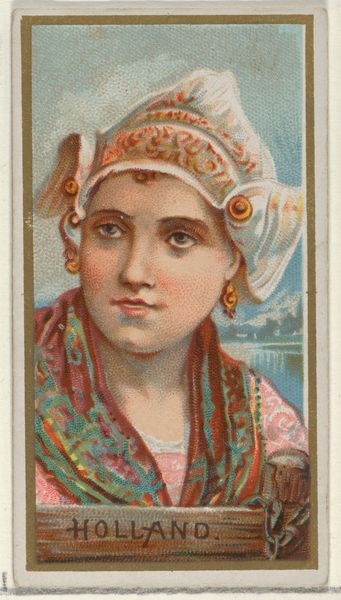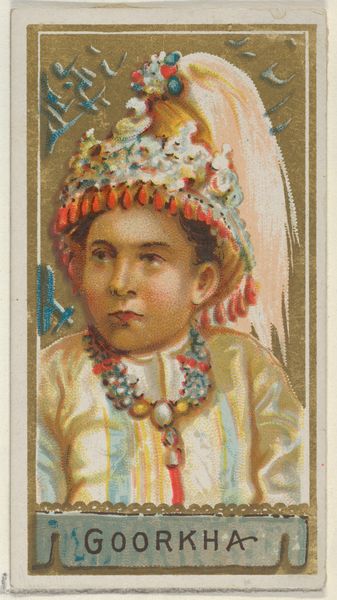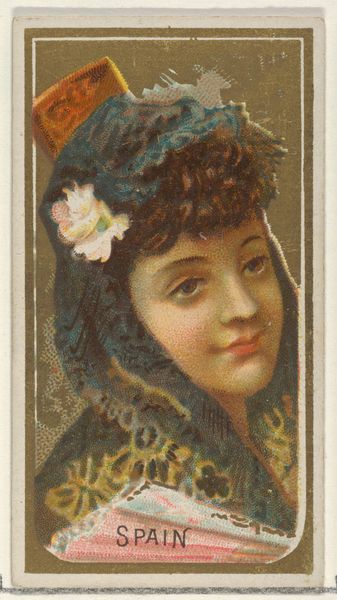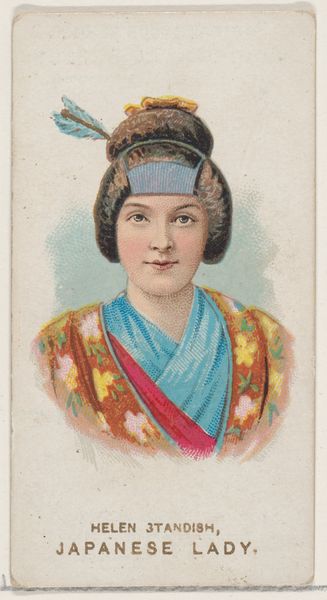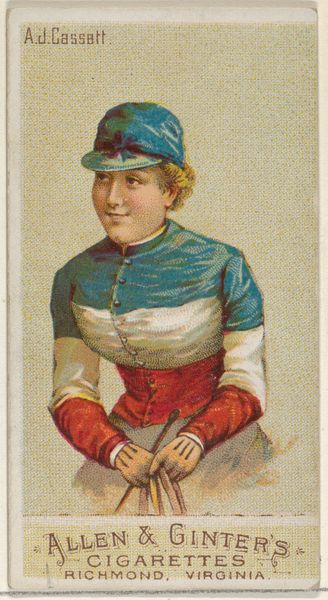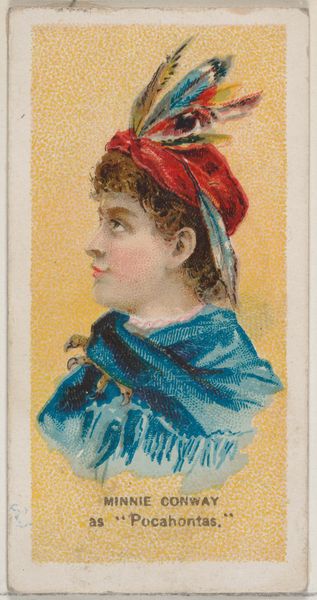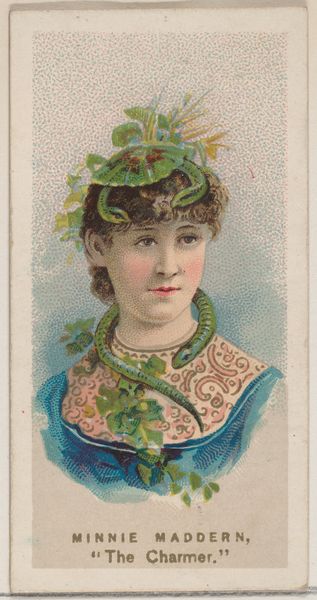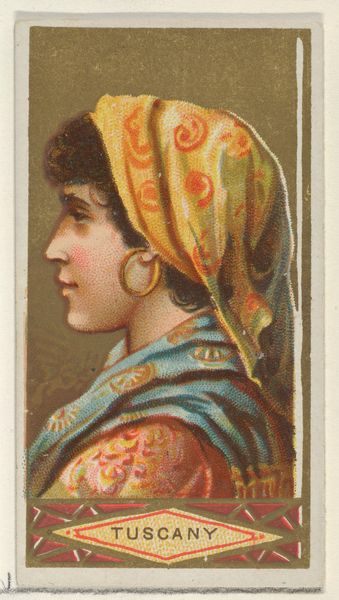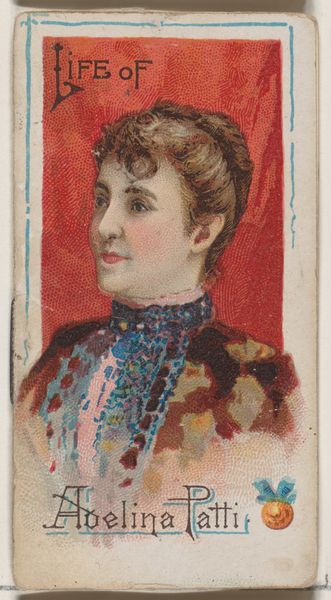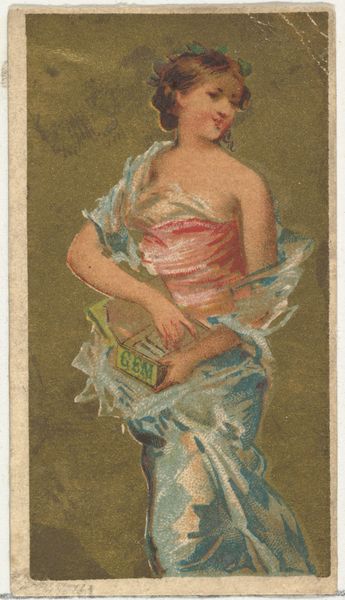
West Indies, from the Types of All Nations series (N24) for Allen & Ginter Cigarettes 1889
0:00
0:00
#
portrait
# print
#
watercolour illustration
#
portrait art
Dimensions: Sheet: 2 3/4 x 1 1/2 in. (7 x 3.8 cm)
Copyright: Public Domain
Curator: This small, vibrant print, "West Indies, from the Types of All Nations series" by Allen & Ginter, dates back to 1889. It’s a lithograph, originally created as a collectible insert for cigarette packs. The delicate rendering suggests a transfer drawing, later carefully coloured. Editor: It's immediately striking—almost unsettling in its exoticizing gaze. There's something deeply rooted in colonial power dynamics in the way this West Indian woman is presented as a "type" to be collected and consumed alongside tobacco. Curator: Absolutely. The "Types of All Nations" series speaks volumes about the manufacturing of identity in the late 19th century. Consider the sheer quantity of these cards produced, the labour involved in their creation, and the ease with which they circulated globally, embedding themselves into the everyday consumer experience. Editor: Right, these trade cards exemplify how popular culture normalized and commodified otherness. Looking closer, the woman's colorful turban and jewelry feel less like celebrations of cultural diversity and more like appropriations for a Western audience eager to experience the “exotic” through their cigarette packs. What are the power relations embedded here? What ideologies are promoted? Curator: What I find interesting is the fusion of styles – the portraiture recalling classical conventions yet influenced by Japonisme. This blending underscores how artistic and commercial spheres co-produced images during this period. Editor: Japonisme filtered through the colonial project, then absorbed and re-represented in Western advertising and material culture… the implications are extensive. It shows how aesthetics could both conceal and advance exploitative practices. Curator: Indeed. Examining the industrial processes and consumer practices provides insights into cultural values being circulated at that time. Mass production amplified stereotypes. Editor: Precisely. And those stereotypes reinforce the idea of a racial hierarchy. It’s vital that we view artwork like this through a lens that questions power, colonialism, and the legacies that continue to resonate today. Curator: Examining this, then, opens up to more comprehensive analysis of the image's historical and social life beyond purely aesthetics. Editor: Right. This wasn’t merely a picture but a tool shaping global perspectives—something to critically confront.
Comments
No comments
Be the first to comment and join the conversation on the ultimate creative platform.
